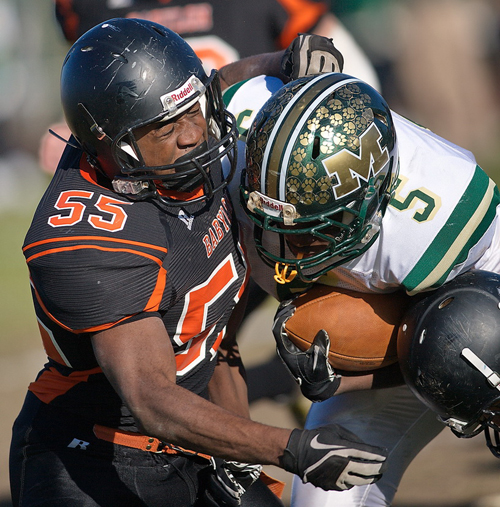Concussion advice for coaches and parents of young athletes

In March, the American Academy of Neurology updated its “return-to-play” guidelines for young athletes — the procedures coaches and athletic trainers use to decide whether a child who has sustained a tough hit during a game should go back on the field or sit it out on the sidelines.
The new recommendations advise that athletes of high school age and younger be managed more conservatively, because studies show they take longer to recover.
“When in doubt, sit it out,” said Dr. Rosanna Sabini, brain injury and concussion rehabilitation physician at North Shore-Long Island Jewish Southside Hospital, where she has taken a special interest in protecting young athletes.
Dr. Sabini has worked with professional boxers and mixed martial arts competitors, authored several studies regarding “return-to-play” guidelines and testified in the Senate regarding concussion legislation to protect youth athletes.
Q: What do you think are the common misconceptions regarding concussions?
A: In the end, a concussion is always a traumatic brain injury. There has to be more significance given to it and I feel that sometimes the names and the descriptions move away from their severity. Some people may call it a mild concussion, but there is nothing mild about it.
You don’t actually need a direct hit to the head. It could be someone in a car accident, for example. When your head flexes forward fast and comes to a halt, your brain is going hit the inside of the skull. There are different types of tissues in your brain and when you go from 60 mph to 0 mph — those densities are all going to decelerate at different speeds. That leads to some structural nerve injuries and biochemical changes.
Q: What symptoms should parents and coaches look out for after a player takes a hard hit?
A: The typical symptoms are headaches and feeling dizzy and nauseous. They may feel that light and sounds really bother them. There’s a lot of information and stimulation coming in and they can’t make sense of it so easily because of the injury, so they are very sensitive. They usually occur pretty quickly from the time of the hit.
Q: What makes concussions so difficult to identify?
A: Sometimes people can’t even identify a concussion happened. Kids get up and they look fine. You have to try and educate the athletes as much as possible on what to look out for. Some kids may completely deny it, but if they never say anything to anyone they are putting themselves at risk for another concussion.
Q: What if a child were to return to play too soon?
A: A person who has had a concussion won’t be able to perform like normal. They are more likely going to get hit again because they won’t have the reaction time. They are at risk of getting another concussion.
It’s important that you get them out. If you get them out sooner and get them resting ASAP, they are more likely to get better quickly. It’s all about prevention.
Q: What should parents tell a player if they have to sit it out?
A: There will always be another game they can play. But there won’t be if you go back out there and you get hit again.
The kind of thing I try to tell kids is you won’t to be 100 percent. You could lose a play or miss a catch. A veteran came to see me for a concussion and said, “I’m part of a team and if I’m not good, I can put the rest of my team at risk.” I always remembered that. I ask children if they want to put their team at risk and they’ll usually tell me, “No.”
It’s continual education of everyone around athletes so that we can prevent it.
Got a health question or column idea? Email Carrie Miller at [email protected]. Follow her on twitter @carriemiller01.








